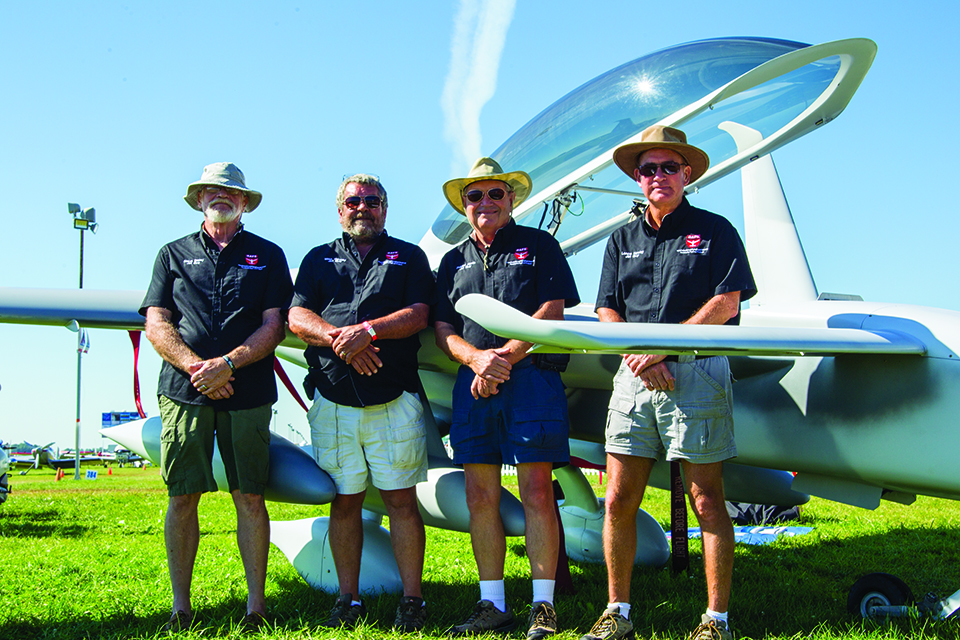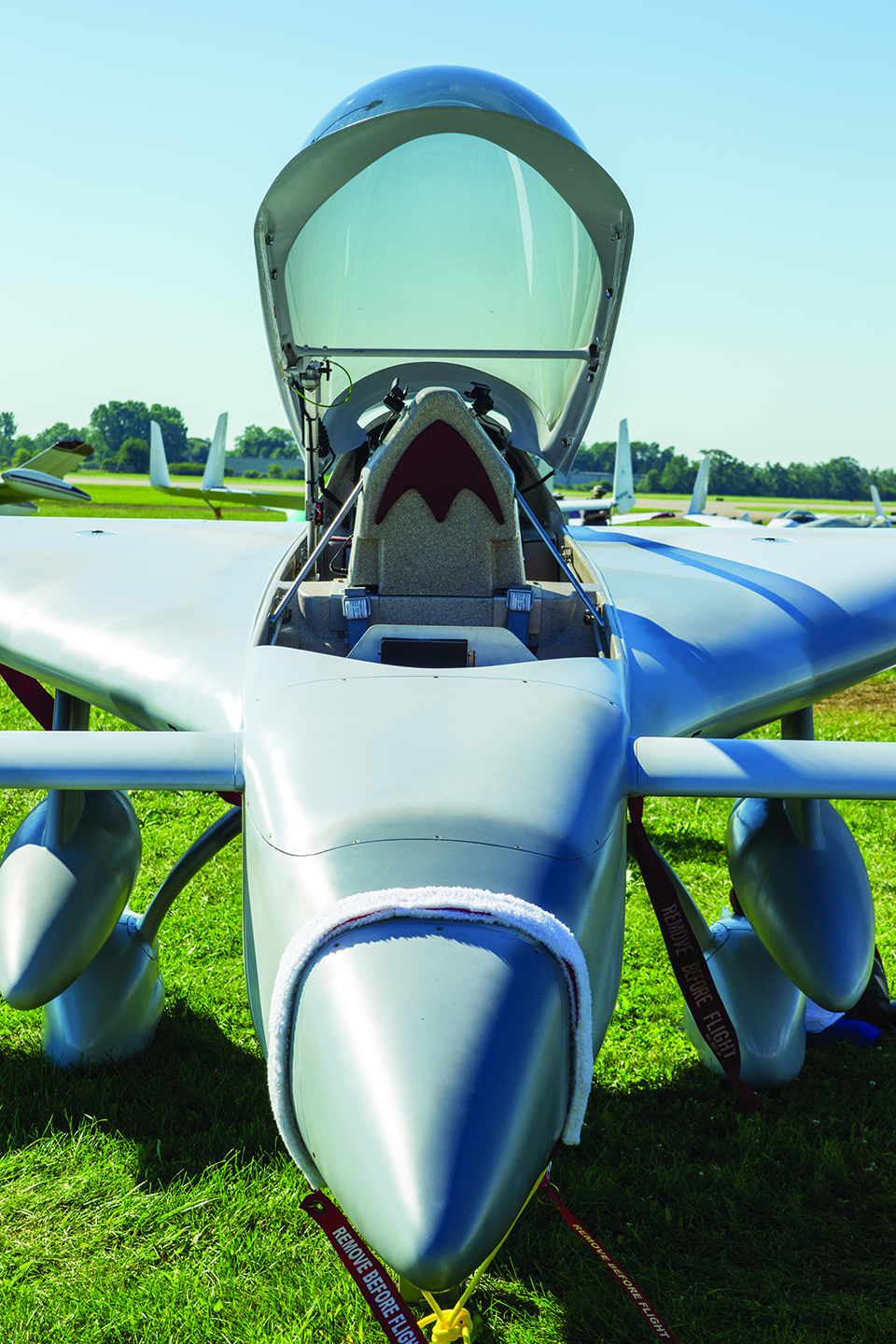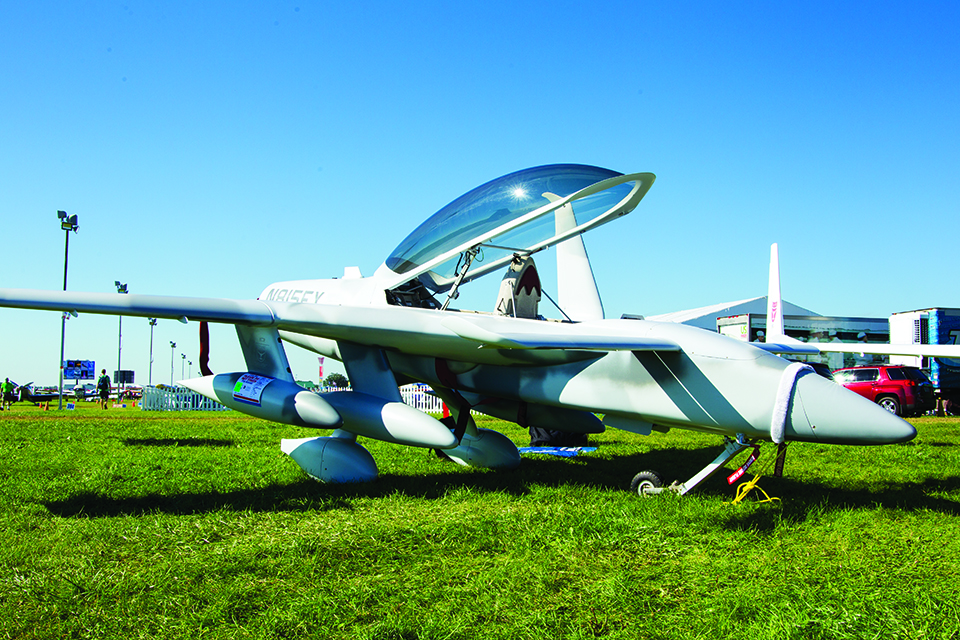Canard Jet Makes Debut at AirVenture
More Rutan-inspired turbines are in the pipeline
By James Wynbrandt
July 27, 2017 - You don’t have to imagine what would happen if a Burt Rutan-designed Long-EZ mated with a Cozy Jet. The canard aircraft parked just beyond the Brown Arch here at EAA AirVenture Oshkosh 2017 shows what the offspring would look like: the JetEZ, a turbine-powered homebuilt designed by Lance Hooley, from Kissimmee, Florida.
“It started with the GE T58-8F engine,” Lance said. “We designed and built the airplane around it.”
With Lance, beside N815EY (NOISEY), stood Robert Harris. Robert is an expert in both canard aircraft and jet engines, and a Cozy Jet builder, and helped develop the JetEZ at his shop, The Jet Guys, in Covington, Tennessee.
“There’s two reasons I built this airplane,” Lance, an Airbus 320 captain for a major airline, said. “One, I’m tired of the mystery that people put around a jet engine. Understand them and use them to your advantage. The other reason I built [it] was for the challenge.”
When Lance left the military in the late ’70s, he decided he wanted to pursue a career in aviation and used GI bill benefits to earn his ratings. But, “Flying was still very expensive, and I thought the avenue to a real cool-looking, fun airplane to fly was to build your own,” with the VariEze his choice.
Robert, meanwhile, was equally smitten with canard craft. “When the VariEze first came out, I decided I had to have one,” he said. “I got kit No. 20, or something.” Robert built and sold the airplane, then built a succession of Rutan canard aircraft while working as an airline A&P. He’d thought about a jet-powered canard craft, but an appropriate engine wasn’t available. Then Les Shockley, of jet-powered truck fame, got some T58 helicopter jet engines, and Robert put one in a Cozy, creating a Cozy Jet. However, “I wanted to get into a more unlimited airframe,” he said.
The two first met in the late ’90s after Lance called Robert, seeking help in building a Long-EZ after reading an article he’d written on canard aircraft for EAA’s Sport Aviation magazine. Robert’s advice at the time: “Why not build with today’s technology and what we’ve learned in structures,” instead of 1974 vintage aircraft. When Lance called him back two years later, with several more completed projects under his belt, “Robert realized I’m not your average homebuilder,” Lance said. Moreover, their objectives to push design envelopes matched up.
The JetEZ project commenced in 2004. “It’s been said it takes a village to raise a child,” Lance said. “It takes a village to build a jet. I’m not very smart, so I surround myself with people smarter than me. In the airlines, that’s called crew resource management.”
Though it resembles a Long-EZ, the JetEZ is 4 inches wider in the middle, 6 inches longer in the rear seat, and stands a foot taller. Robert designed the internal structure. It has Racer wings and a center section with a heavily modified spar. The canard has been heavily modified as well, to accommodate the increased forces induced by higher airspeeds.
“This is the first purpose-built canard jet out of our shop,” Robert said. Four more are in development, “And they’re all different,” he said. “We build one-of-a-kind. We never tried to build two of anything — except winglets.”
The JetEZ first flew in February, and now has about 50 hours on it, most of them trouble-free. “We have so many innovations in this airplane,” Lance said. “A different wing, canard, blended winglet, the gear is different, four pods underneath (the fuselage), the jet engine, the fuel system, the oil system, and the only thing we’re having problems with is the radios,” which, of course, were made by a respected OEM.
Meanwhile, Lance is slowly expanding the flight envelope. “We’re creeping in on the top-end numbers,” he said. Maximum normal cruise speed will be 310 knots, limited out of concern for the aerodynamic quirks canards have at high speeds, and a maximum 18,000-foot altitude because of the engine’s mechanical fuel controller.
What’s next for the JetEZ? “I’m going to sell it so we can fund other projects,” Lance said. “I already own a Long-EZ. The first person with more than $300,000 has got a jet.”



